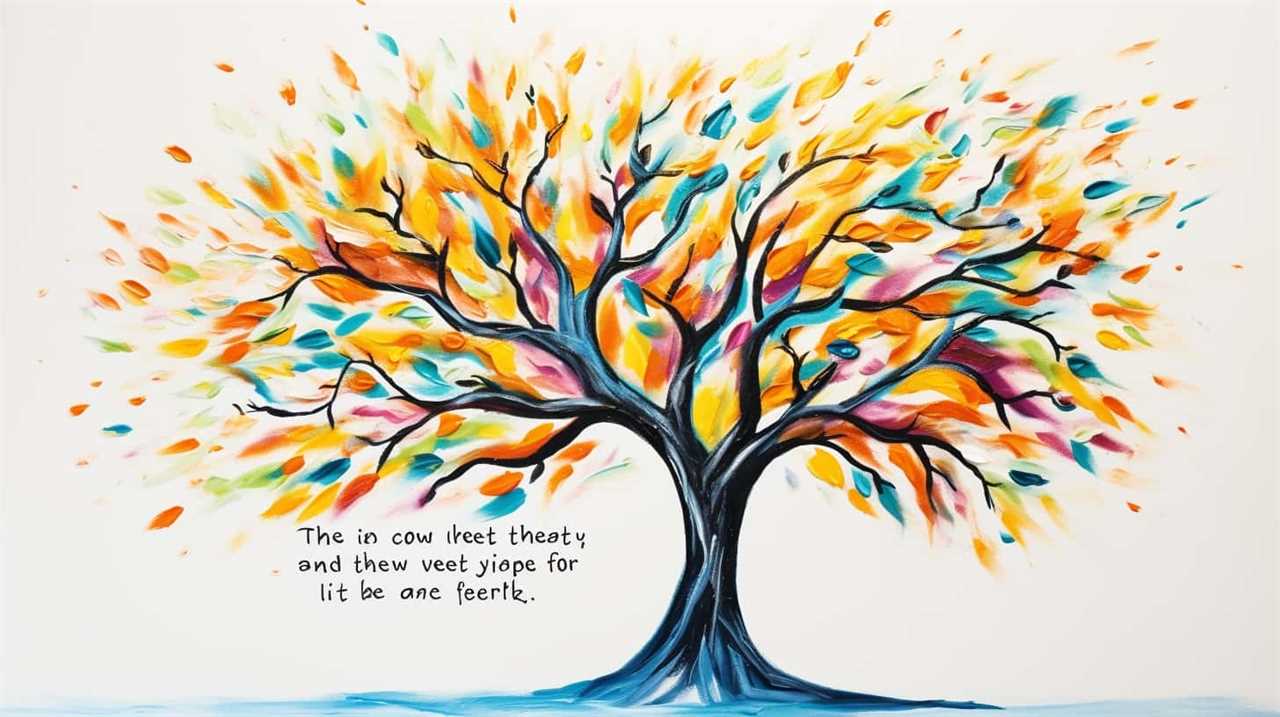As educators in the field of art, we are positioned at the crossroads of creativity and freedom, where the potential for the future of art education is limitless. We anticipate several trends that will undoubtedly influence the way art is taught and learned.
With the ever-evolving landscape of technology, we embrace its integration into the art classroom, allowing students to explore new dimensions and push the boundaries of their creativity.
Moreover, we recognize the importance of fostering cultural diversity, as art becomes a powerful tool for understanding and celebrating different perspectives.
As we look ahead, we see the rise of STEAM education, intertwining science, technology, engineering, and math with the arts, creating a holistic approach to learning.
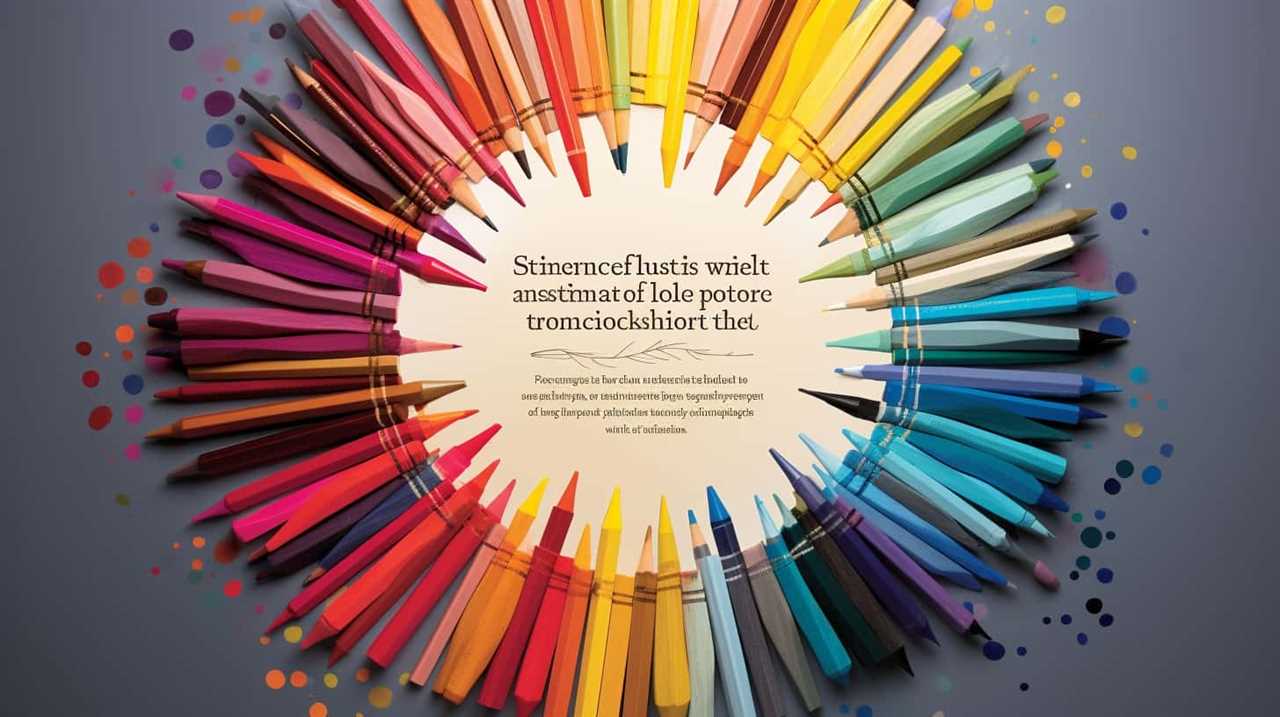
Furthermore, we believe in the transformative power of art to build empathy, redefine traditional art forms, empower student voice and choice, and ultimately create a future where collaboration and community engagement are central to art education.
Key Takeaways
- Blending traditional and digital art education
- Embracing interdisciplinary learning
- Integration of STEAM education and emphasis on creativity and innovation
- Addressing social and environmental issues through art
The Evolution of Art Education
As art educators, we see the evolution of art education as a dynamic and ever-changing process. With the blending of traditional and digital art education, we’re witnessing a transformative shift in how we teach and learn about art. Gone are the days of solely focusing on traditional mediums such as painting and sculpture. Instead, we’re embracing interdisciplinary learning in art education, where students are encouraged to explore connections between art and other subjects.
This blending of traditional and digital art education opens up a world of possibilities for students. They can now create art using a wide range of mediums, from traditional materials to digital tools such as graphic design software and 3D modeling. This interdisciplinary approach allows students to not only develop their artistic skills but also to think critically and problem-solve in new and innovative ways.
As we continue to embrace technology in the art classroom, we’re empowering our students to become creators in the digital age. By incorporating digital tools and resources, we’re equipping them with the necessary skills to navigate the ever-evolving landscape of art and technology. This integration of technology not only enhances the learning experience but also prepares students for future careers in the creative industries.
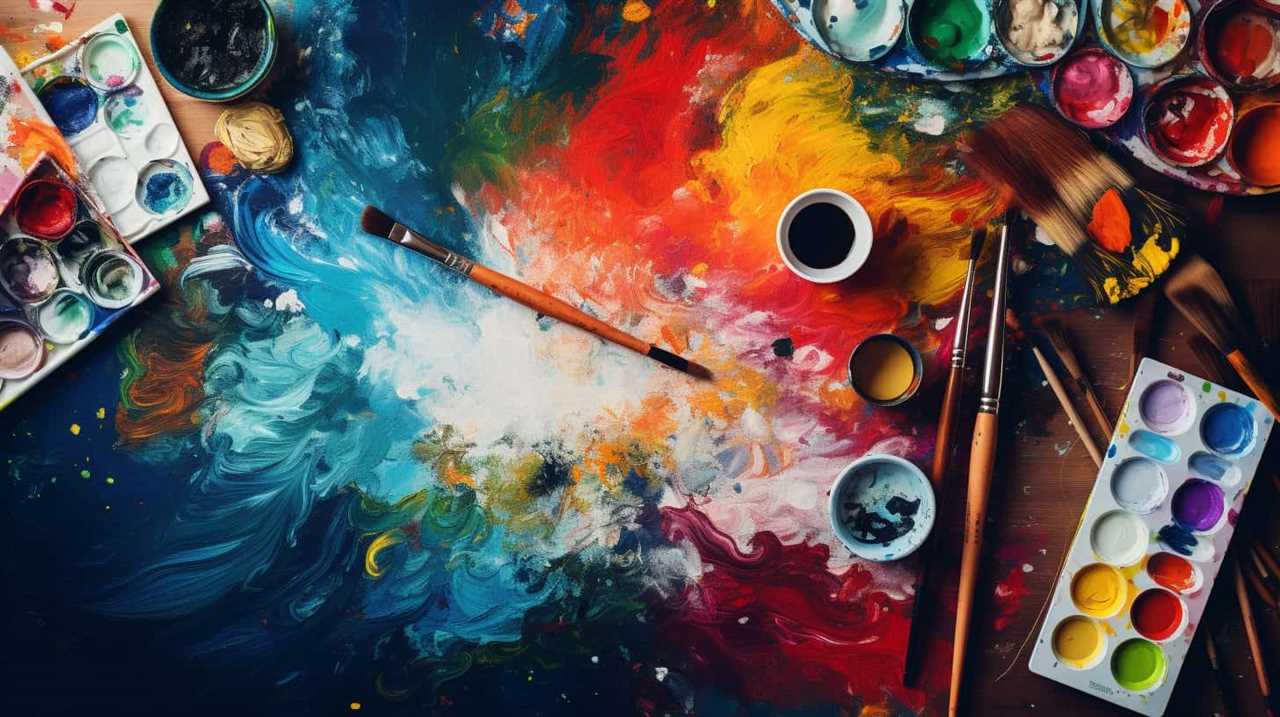
Transitioning into the subsequent section about ’embracing technology in the art classroom,’ we can see that the evolution of art education isn’t just about incorporating digital tools but also about embracing the possibilities that technology brings.
Embracing Technology in the Art Classroom
We believe that incorporating technology in the art classroom is essential for preparing our students for future careers in the creative industries. As art educators, we recognize the importance of embracing digital tools and integrating them into our teaching practices. By doing so, we not only equip our students with the necessary skills to navigate the digital landscape but also encourage them to explore new possibilities and expand their creative horizons.
To illustrate the benefits of embracing technology in the art classroom, we have created a table showcasing some key advantages:
| Advantages of Embracing Technology | Examples |
|---|---|
| Enhanced creativity | Using digital drawing tablets to experiment with different techniques and effects |
| Access to a wider range of resources | Exploring online libraries and databases for reference images and inspiration |
| Collaboration and feedback | Using online platforms for peer critiques and collaborative projects |
| Virtual art exhibits | Creating and curating virtual exhibitions to showcase student work |
| Professional development | Utilizing online courses and tutorials to stay updated on the latest digital tools and techniques |
Exploring New Mediums and Techniques
To continually evolve as art educators, we actively incorporate new mediums and techniques into our teaching practices. We understand the importance of exploring abstract concepts and experimental techniques to encourage our students’ creativity and push the boundaries of traditional art forms. By introducing them to new mediums and techniques, we empower them to express themselves in unique and innovative ways.
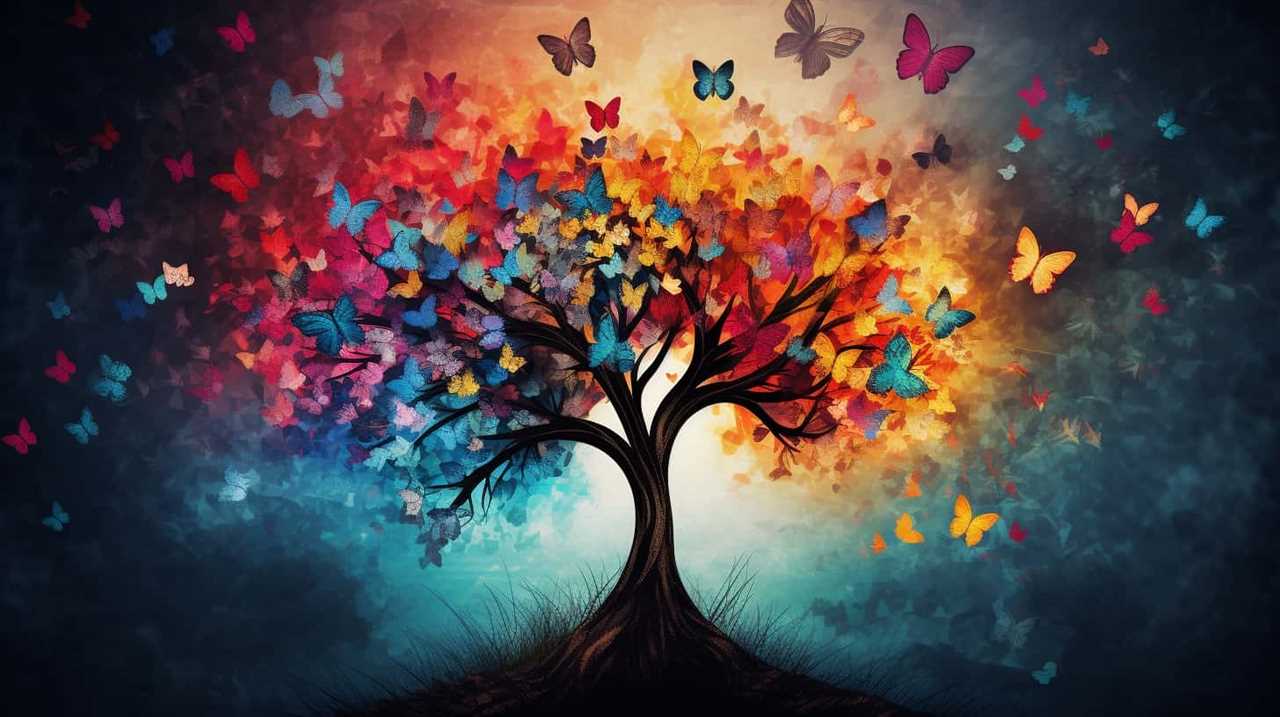
One of the ways we explore new mediums is by introducing our students to digital art. With the advancement of technology, digital art has become an increasingly popular medium for artists to experiment with. We teach our students how to use digital tools and software to create stunning and thought-provoking artworks. This not only expands their artistic skills but also opens up new possibilities for self-expression.
In addition to digital art, we also encourage our students to explore unconventional materials and techniques. This could include using found objects, creating art installations, or experimenting with different textures and surfaces. By breaking away from traditional art materials, our students are able to think outside the box and create artworks that challenge societal norms and expectations.
Fostering Cultural Diversity in Art Education
By embracing diverse cultural perspectives, we aim to create an inclusive art education environment that celebrates the rich and varied artistic traditions from around the world. Cultural inclusivity in art education is crucial for fostering a sense of belonging and understanding among students. It allows them to explore different cultural expressions and gain a broader perspective on the world.
To achieve this, we must incorporate the following strategies into the art curriculum:

- Integrate diverse art forms: By exposing students to a wide range of art forms, such as traditional crafts, indigenous art, and contemporary global art, we can broaden their understanding of cultural diversity. This can be done through guest artist workshops, field trips to cultural institutions, and incorporating diverse art forms into classroom projects.
- Showcase diverse artists: By highlighting the works of artists from different cultural backgrounds, we can challenge stereotypes and expand students’ understanding of what art can be. This can be done through exhibitions, guest lectures, or virtual artist talks.
- Encourage cross-cultural collaborations: By facilitating collaborations between students from different cultural backgrounds, we can promote dialogue, empathy, and mutual understanding. This can be achieved through group projects, art exchanges with schools from different regions, or online platforms for sharing artwork.
- Incorporate cultural histories: By integrating cultural histories into the art curriculum, we can provide students with a deeper understanding of the socio-cultural contexts in which art is created. This can be done through the study of art history, cultural anthropology, and the exploration of diverse art movements.
The Rise of STEAM Education in the Arts
As art educators, we’re witnessing the rise of STEAM Education in the arts, and it’s having a profound impact on creativity and innovation.
By integrating arts and sciences, STEAM encourages students to think critically, solve problems, and approach challenges from multiple perspectives.
This interdisciplinary approach not only enhances students’ understanding of both subjects, but also fosters their ability to think outside the box and explore new possibilities.
Steam’s Impact on Creativity
We, as art educators, foresee that STEAM education in the arts will have a transformative impact on creativity. Here are four reasons why:
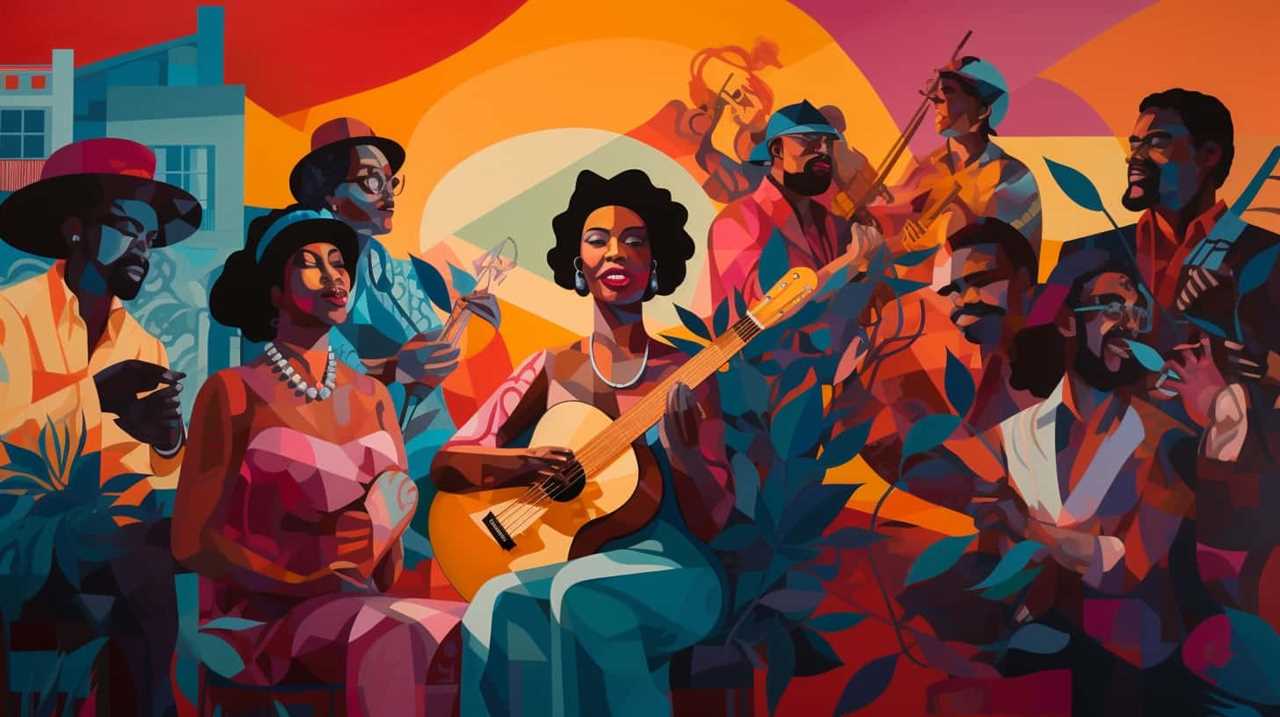
- Integration of STEAM and traditional techniques: By combining science, technology, engineering, and mathematics with traditional artistic techniques, students will develop a broader skill set that allows for innovation and experimentation. This fusion will push the boundaries of creativity and open new avenues for artistic expression.
- STEAM and cultural preservation: The incorporation of STEAM education in the arts provides a platform for preserving and celebrating diverse cultural practices. Students won’t only learn about different artistic traditions but also explore how technology and science can be used to revitalize and sustain these cultural practices for future generations.
- Expanded creative problem-solving skills: STEAM education encourages students to think critically and approach problems from different angles. By blending art with other disciplines, students will develop a multidimensional approach to problem-solving, enhancing their creativity and ability to tackle complex challenges.
- Promotion of interdisciplinary collaboration: STEAM education promotes collaboration between artists, scientists, engineers, and other professionals. This interdisciplinary approach fosters a culture of collaboration, where diverse perspectives come together to solve real-world problems. By working together, students will develop a deeper understanding of different disciplines and learn how to leverage their collective knowledge to create innovative solutions.
With the rise of STEAM education in the arts, we anticipate a future where creativity isn’t limited to traditional artistic practices but becomes a dynamic force for societal transformation. Transitioning into the next section, let’s explore the exciting possibilities that arise from integrating arts and sciences.
Integrating Arts and Sciences
The integration of arts and sciences through STEAM education in the arts brings together diverse disciplines to foster innovation and creative expression. STEM integration in the arts allows students to explore the connections between different fields of knowledge, promoting interdisciplinary learning and a holistic understanding of the world. By combining science, technology, engineering, and mathematics with art, students are encouraged to think critically, solve complex problems, and communicate their ideas in innovative ways. This approach not only enhances students’ cognitive abilities but also nurtures their creativity and imagination. Through hands-on projects and collaborative experiences, students develop skills that are essential for the 21st century, such as collaboration, communication, and adaptability. The table below illustrates the various benefits of integrating arts and sciences in education:
| Benefits of Integrating Arts and Sciences |
|---|
| Encourages critical thinking and problem-solving skills |
| Fosters creativity and innovation |
| Enhances communication and collaboration abilities |
| Promotes interdisciplinary learning |
| Develops skills essential for the 21st century |
Nurturing Creativity and Critical Thinking Skills
One key aspect of nurturing creativity and critical thinking skills is fostering an environment that encourages exploration and risk-taking. In today’s rapidly changing world, it’s essential to equip students with the ability to think critically, solve problems, and adapt to new situations. To achieve this, art educators are incorporating innovative teaching methods and interdisciplinary learning approaches.
Here are four ways in which art educators are nurturing creativity and critical thinking skills:
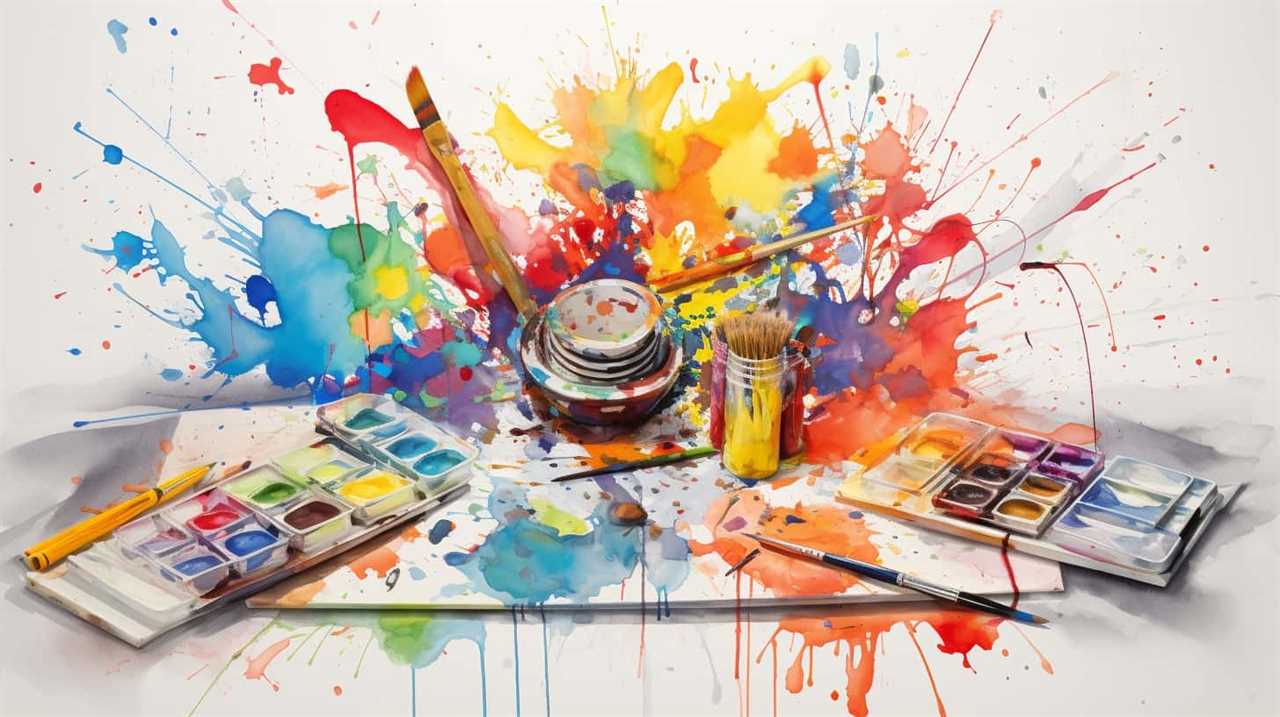
- Encouraging open-ended projects: By providing students with the freedom to explore their ideas and experiment with different materials and techniques, educators foster creativity and critical thinking. Open-ended projects allow students to develop their own unique solutions to artistic challenges.
- Promoting collaboration: Collaborative projects encourage students to exchange ideas, challenge assumptions, and work together to solve complex problems. By working in teams, students develop critical thinking skills while learning to appreciate diverse perspectives.
- Integrating technology: Embracing digital tools and platforms allows students to explore new mediums and techniques, expanding their creative capabilities. Technology also enables students to analyze and interpret data, enhancing their critical thinking skills.
- Providing real-world experiences: Art educators are increasingly connecting students with professionals in the field, organizing exhibitions, and engaging in community-based projects. These experiences expose students to real-world challenges and encourage them to think critically about social and environmental issues.
Addressing Social and Environmental Issues Through Art
As art educators, we recognize the power of art as activism, a tool for sparking conversations and inspiring change. Through art, we can address social and environmental issues, shedding light on important topics and encouraging critical thinking.
Moreover, art can provide creative solutions to sustainability challenges, fostering innovative approaches to protect our planet. By harnessing the transformative power of art, we can create a more engaged and conscious society that’s actively working towards a better future.
Art as Activism
Art educators foresee a future where art becomes a powerful medium for addressing social and environmental issues. We believe that artistic activism and art as protest will play a crucial role in creating awareness and inspiring action. Here are four ways in which art can be used as a tool for activism:
- Visual storytelling: Artists can use their creativity to tell powerful stories that shed light on social and environmental injustices, evoking empathy and inspiring change.
- Public installations: Large-scale art installations in public spaces can serve as a visual reminder of pressing issues, sparking conversations and encouraging collective action.
- Community engagement: Art can bring communities together, fostering dialogue and collaboration to address local social and environmental challenges.
- Digital activism: With the rise of technology, artists can leverage social media platforms and digital tools to reach a wider audience, amplifying their message and mobilizing support for their cause.
As we explore the potential of art as activism, it becomes evident that creative sustainability solutions are equally important in addressing the pressing environmental issues we face today.
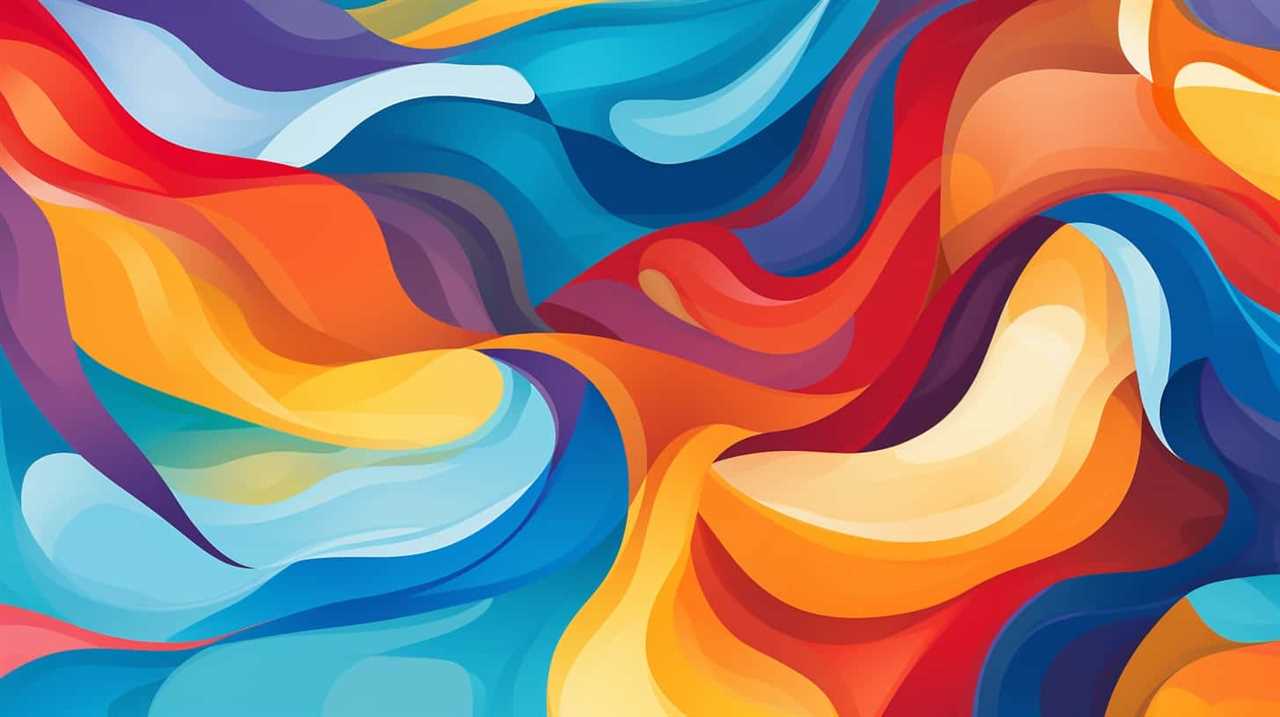
Creative Sustainability Solutions
In our vision for the future, art educators foresee the potential of creative sustainability solutions to effectively address social and environmental issues through the medium of art.
Sustainable art practices have gained momentum as artists and educators strive to create art that not only inspires, but also promotes positive change. By incorporating eco-friendly materials into their work, artists can reduce their environmental impact and raise awareness about pressing issues such as climate change and pollution.
Through these creative sustainability solutions, artists can engage audiences in meaningful conversations about the state of our planet and the actions needed to preserve it. Art has the power to transcend language and cultural barriers, making it a powerful tool for advocacy and social change. By leveraging their artistic skills and imagination, artists can generate innovative solutions and inspire others to take action.
As art educators, we have a responsibility to encourage and support sustainable art practices. By teaching students about the importance of using eco-friendly materials and techniques, we can empower the next generation of artists to create art that not only captivates, but also contributes to a more sustainable future.

Inspiring Social Change
Our vision for the future includes harnessing the power of art to inspire social change and address pressing social and environmental issues. Art has the ability to transcend barriers and evoke emotions that can mobilize communities towards action. By promoting social justice through artistic expression, we can ignite a sense of activism and empower individuals to make a difference in their communities and beyond.
- Art as a catalyst for change: Through thought-provoking exhibitions, performances, and installations, art can challenge the status quo and inspire critical thinking.
- Amplifying marginalized voices: Art can provide a platform for underrepresented communities to share their stories and experiences, promoting inclusivity and equality.
- Environmental consciousness through art: By using art to raise awareness about environmental issues, we can inspire sustainable practices and advocate for a healthier planet.
- Collaboration for social change: Art can bring people together, fostering collaboration and collective action in tackling social challenges, promoting unity and solidarity.
The Impact of Globalization on Art Education
As art educators, we anticipate the profound impact of globalization on art education. Globalization has brought about a significant shift in the way we perceive and engage with art. With the advent of technology and the ease of communication, we’re now more connected than ever before. This interconnectedness has given rise to new global art trends and has fostered a rich cultural exchange.
One of the key aspects of globalization in art education is the exposure to diverse artistic traditions and practices from around the world. Through globalization, we’ve the opportunity to learn about different artistic techniques, styles, and perspectives. This exposure not only enriches our own artistic practice but also encourages us to embrace diversity and challenge our preconceived notions.
Furthermore, globalization has opened up new avenues for collaboration and interdisciplinary approaches in art education. Artists and educators can now collaborate across borders, sharing ideas and resources to create innovative and impactful projects. This cross-pollination of ideas and perspectives fosters creativity and encourages students to think critically and engage with the global community.
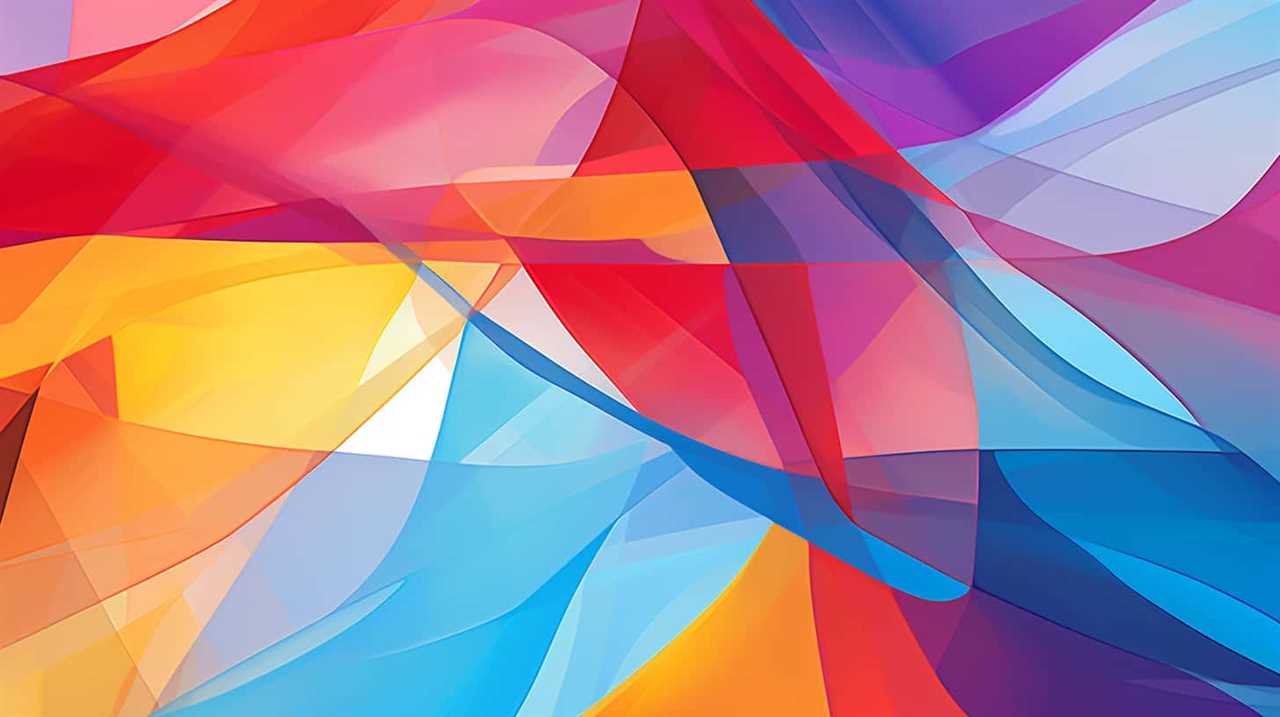
Integrating Art and Science for Innovative Expression
The integration of art and science allows us to explore innovative modes of expression that transcend traditional boundaries. Through the collaboration of art and technology, we can push the boundaries of what’s possible and create art that not only stimulates the senses but also engages the mind. This innovative scientific art expression opens up new avenues for creativity and discovery, merging the worlds of art and science in ways that were previously unimaginable.
Here are four key aspects of integrating art and science for innovative expression:
- Interdisciplinary Collaboration: By bringing together artists and scientists, we can foster a creative environment where new ideas and perspectives can flourish. This collaboration allows for the exploration of complex scientific concepts through artistic mediums, resulting in unique and thought-provoking works of art.
- Visualizing Scientific Data: Through the use of data visualization techniques, artists can transform complex scientific data into visually compelling and accessible artworks. This not only enhances our understanding of scientific concepts but also provides a new way to engage with scientific information.
- Biomimicry: Artists and scientists can draw inspiration from nature to create innovative and sustainable solutions. By studying the intricate designs and patterns found in the natural world, we can apply these principles to art and technology, resulting in the development of new materials, structures, and processes.
- Exploring Ethical and Social Implications: The integration of art and science also allows us to explore the ethical and social implications of scientific advancements. Artists can challenge societal norms and raise awareness about the impact of technology on our lives, sparking important conversations and encouraging critical thinking.
The Role of Art Education in Building Empathy
One key aspect of art education is fostering empathy through interactive experiences. Art has the power to evoke emotions and connect individuals on a deeper level, allowing them to understand and relate to different perspectives. By engaging with various art forms, students can develop their emotional intelligence and learn to appreciate the diverse experiences and identities of others. Through art, we can promote inclusivity and equity by providing a platform for marginalized voices to be heard and celebrated. Art education can empower students to challenge societal norms and advocate for social justice, ultimately creating a more compassionate and empathetic society.
By building emotional intelligence, art education equips students with the skills to navigate complex social situations and understand the emotions of others. Through art-making, students can explore their own emotions and express them in a safe and supportive environment. This process allows them to develop empathy and gain a deeper understanding of the human experience. Furthermore, by promoting inclusivity and equity, art education ensures that all voices are heard and valued. It provides a space for students from diverse backgrounds to share their stories and perspectives, fostering a sense of belonging and promoting social cohesion.
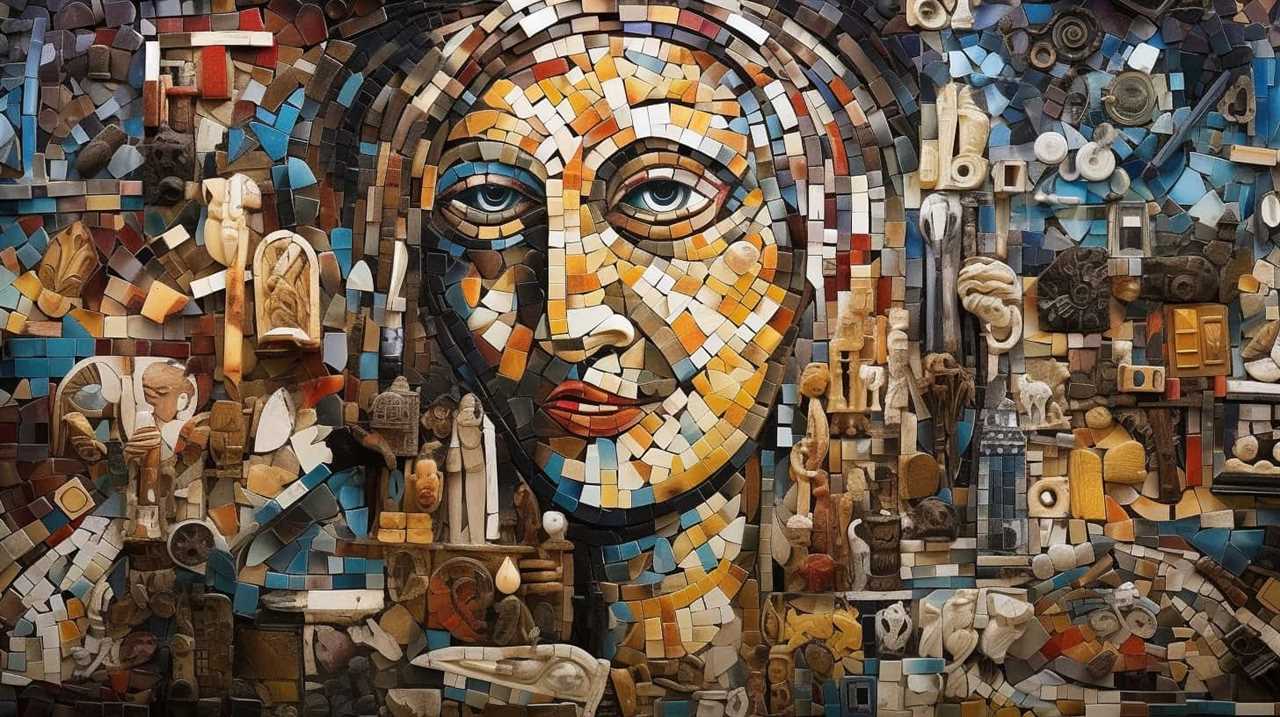
In the next section, we’ll explore how art education is redefining traditional art forms in a modern world, allowing for greater innovation and creativity.
Redefining Traditional Art Forms in a Modern World
As art educators, we must acknowledge the evolving nature of traditional art forms in our modern world. One key aspect is the rise of modern art interpretations, where artists challenge conventional techniques and explore new mediums and perspectives.
Additionally, the influence of technology on art can’t be overlooked, as it has opened up endless possibilities for creativity and experimentation.
Modern Art Interpretations
In our field, we see a multitude of modern art interpretations that redefine traditional art forms in a modern world. These interpretations are driven by the advancements in technology and the changing social, cultural, and political landscapes.
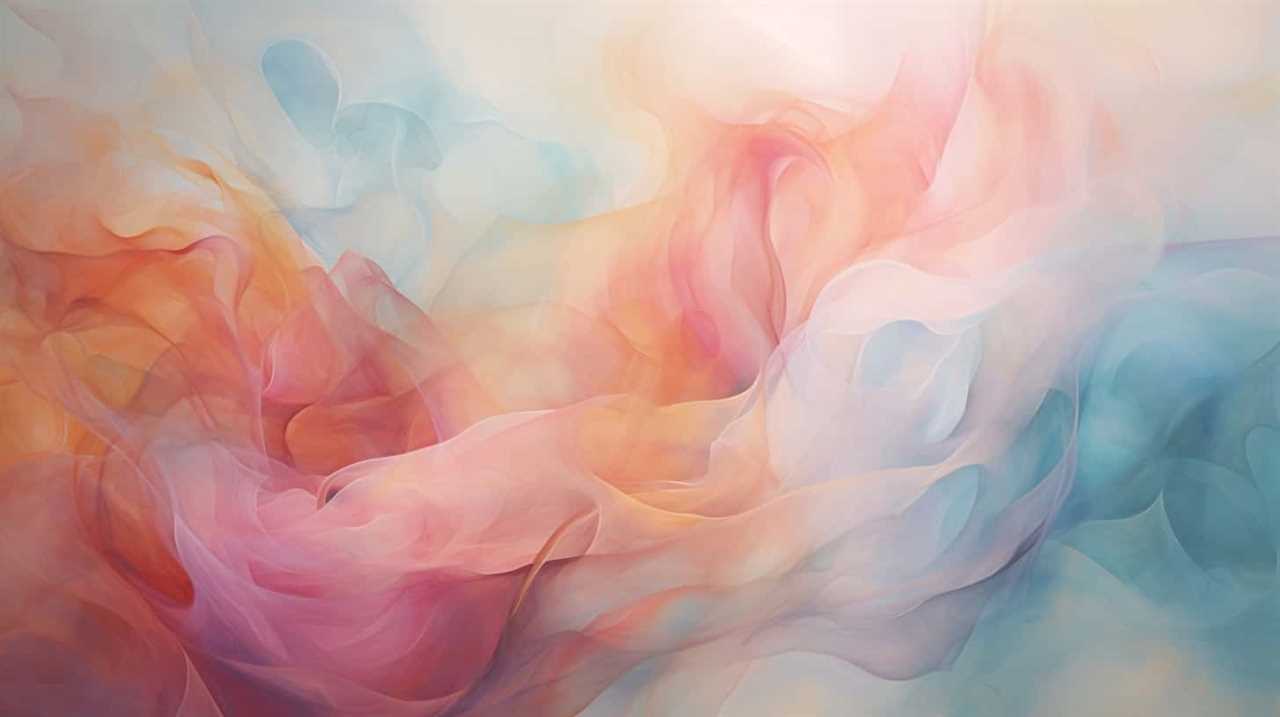
Here are four key trends we observe in modern art interpretations:
- Embracing Digital Art: Contemporary artists are exploring the possibilities of digital mediums, creating artwork that engages with technology and blurs the boundaries between traditional and digital art forms.
- Experimentation with Mediums: Artists are pushing the boundaries of traditional art forms by experimenting with unconventional materials and techniques. They’re redefining what art can be and challenging our perception of traditional mediums.
- Conceptual Art: Modern art interpretations often prioritize the concept or idea behind the artwork rather than the physical execution. Artists are using art as a means of communicating complex ideas and provoking thoughtful discussions.
- Interdisciplinary Approaches: Artists are increasingly incorporating elements from different disciplines such as science, technology, and literature to create interdisciplinary artworks that transcend traditional categorizations.
These trends reflect the dynamic and ever-evolving nature of modern art interpretations. They offer a fresh perspective and invite us to question and redefine our understanding of traditional art forms in the context of a modern world.
Technology’s Impact on Art
We embrace technology’s impact on art, redefining traditional art forms in a modern world. The rise of digital art and virtual reality has revolutionized the way we create and experience art. Digital art allows artists to explore new mediums and techniques, pushing the boundaries of what is possible. With the use of software and digital tools, artists can manipulate images, create animations, and produce interactive artworks. Virtual reality takes this a step further, immersing the viewer in a completely virtual environment where they can engage with art in a whole new way. It allows for a more interactive and immersive experience, blurring the lines between the artist and the viewer. This technological advancement has opened up endless possibilities for artistic expression and has the potential to redefine the art world as we know it.
| Pros | Cons |
|---|---|
| Expands artistic possibilities and techniques | Can be expensive to invest in technology |
| Allows for interactive and immersive experiences | Accessibility issues for some audiences |
| Provides new mediums for artistic expression | Potential loss of traditional art forms |
| Enables collaboration and global connectivity | Reliance on technology may limit creativity |
Empowering Student Voice and Choice in Art Education
Our goal is to foster a learning environment that encourages students to actively participate and make their own artistic choices. In art education, empowering student voice and choice is crucial for student engagement and personalized learning. By giving students the freedom to express themselves and make decisions about their artwork, we can enhance their creativity and passion for the arts.
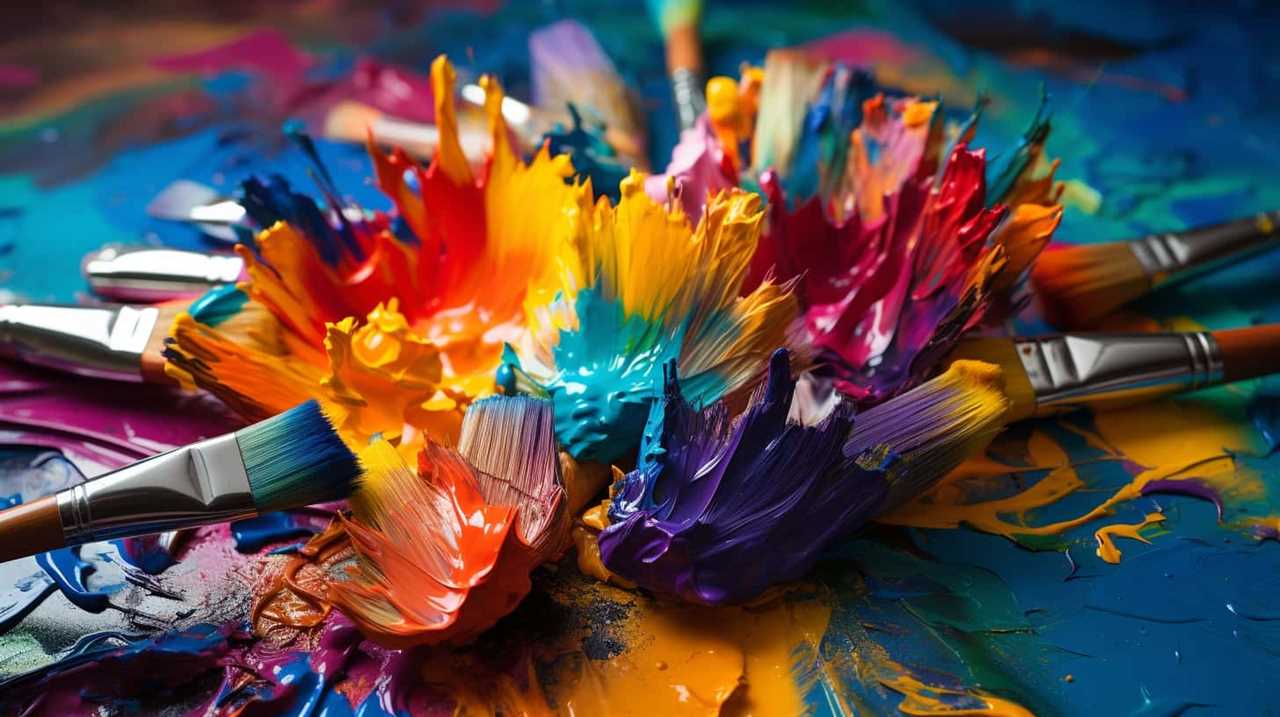
Here are four ways we can empower student voice and choice in art education:
- Encourage open-ended projects: Providing students with open-ended projects allows them to explore different artistic techniques and materials while expressing their unique ideas and perspectives.
- Offer a variety of art mediums: Offering a range of art mediums such as painting, sculpture, photography, and digital art enables students to choose the medium that resonates with them the most, allowing for a more personalized and meaningful artistic experience.
- Provide opportunities for self-reflection: Allowing students to reflect on their artwork and articulate their artistic choices helps them develop a deeper understanding of their creative process and encourages them to take ownership of their artistic decisions.
- Support peer collaboration and critique: Creating a collaborative and inclusive classroom environment where students can share and discuss their artwork not only enhances their communication and critical thinking skills but also empowers them to take pride in their artistic voice.
The Future of Art Education: Collaboration and Community Engagement
As art educators, one trend we foresee for the future of art education is an increased emphasis on collaboration and community engagement. Collaborative learning is an approach that encourages students to work together, fostering creativity, critical thinking, and problem-solving skills. By engaging in group projects and discussions, students learn to value diverse perspectives and develop empathy towards others.
Community outreach is another important aspect of art education, allowing students to connect with their local communities and address social issues through artistic expression. Through community engagement, students can create meaningful artwork that not only reflects their personal experiences but also contributes to the well-being and growth of their communities.
Art educators play a crucial role in facilitating these collaborative and community engagement experiences. By providing guidance and support, they empower students to become active participants in their own education and foster a sense of agency and ownership over their artistic practice.
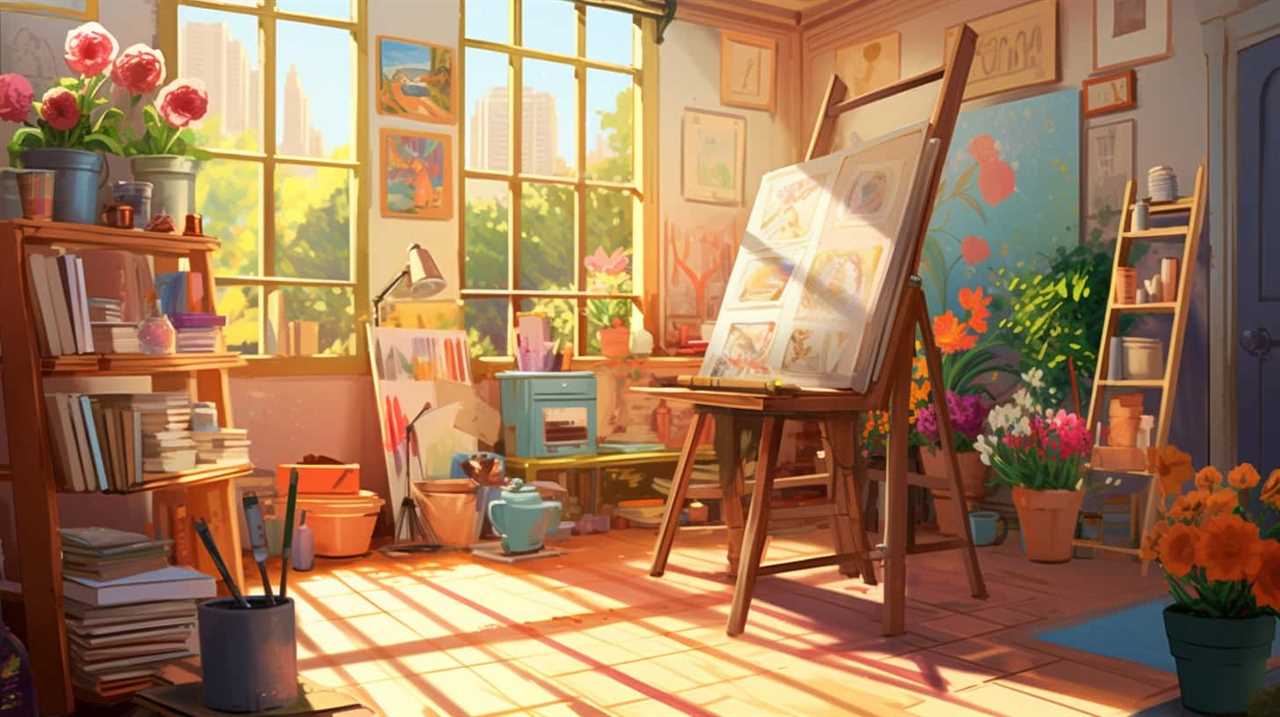
This shift towards collaboration and community engagement in art education promotes inclusivity, diversity, and social justice, as it encourages students to use their creative skills to make a positive impact in their communities.
Frequently Asked Questions
How Does the Evolution of Art Education Impact the Future of Art Education?
We believe that the evolution of art education will have a profound impact on the future of art education. As new technologies and teaching methods emerge, art educators will need to adapt and embrace these changes to ensure the liberation and growth of their students.
What Are Some New Technologies That Are Being Embraced in the Art Classroom?
In the art classroom, we’re embracing new technologies like virtual reality and digital painting. These innovative tools allow us to explore new creative possibilities and engage students in a liberating and immersive artistic experience.
What Are Some New Mediums and Techniques That Art Educators Are Exploring?
In the ever-evolving world of art education, we’re exploring new mediums and techniques. From digital art to mixed media, we’re constantly pushing boundaries, like a vibrant canvas bursting with unlimited creative possibilities.

How Can Art Education Foster Cultural Diversity?
Artistic expression allows for the exploration and celebration of diverse cultures. By incorporating global perspectives into art education, we can foster a greater understanding and appreciation of cultural diversity, promoting liberation and liberation.
How Does the Rise of STEAM Education Affect the Arts?
The rise of STEAM education has had a significant impact on the arts. As art educators, we have witnessed a shift towards interdisciplinary learning, where students are encouraged to explore the connections between science, technology, engineering, and math, sparking a new wave of creativity and innovation.
How Will Digital Evolution Impact Future Trends in Art Education?
Art’s digital evolution experts predict that future trends in art education will be heavily influenced by technological advancements. With the integration of digital tools and online platforms, students will have access to a wider range of resources and interactive learning experiences, revolutionizing the way art is taught and learned.
Conclusion
In conclusion, as art educators, we can foresee a future where technology plays a significant role in the art classroom, allowing for new mediums and techniques to be explored. We also anticipate a focus on fostering cultural diversity and building empathy through art education.
The rise of STEAM education in the arts will further enhance interdisciplinary learning. Traditional art forms will be redefined to reflect the modern world, and students will be empowered through their voice and choice in art education.
Collaboration and community engagement will be key factors in shaping the future of art education.
Lauren’s talent in writing is matched by her passion for storytelling. Her love for books and deep understanding of culture and entertainment add a distinct flavor to her work. As our media and press contact, Lauren skillfully bridges the gap between afterQuotes and the broader media landscape, bringing our message to a wider audience.



